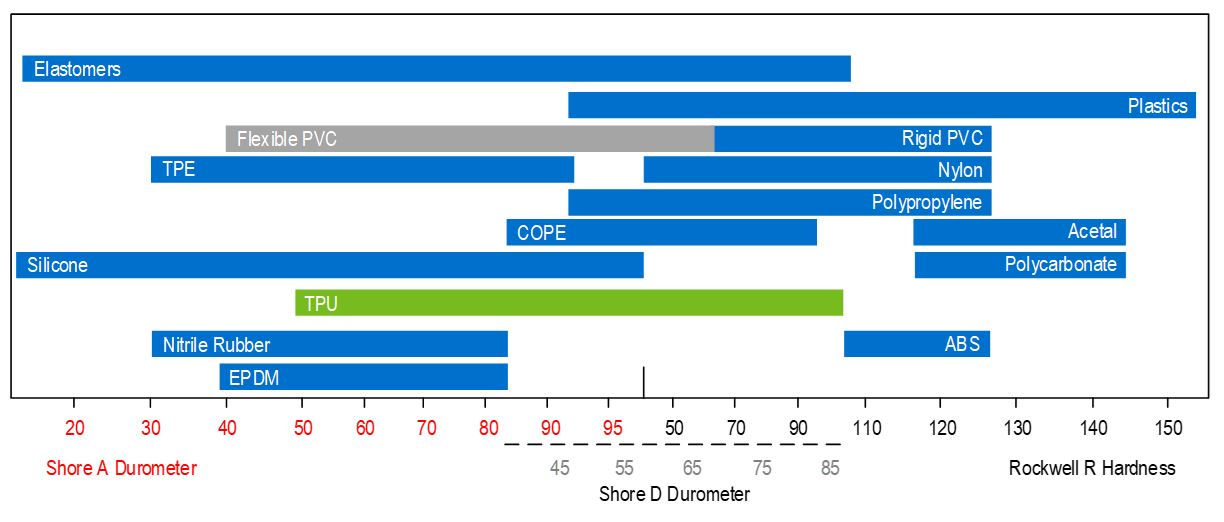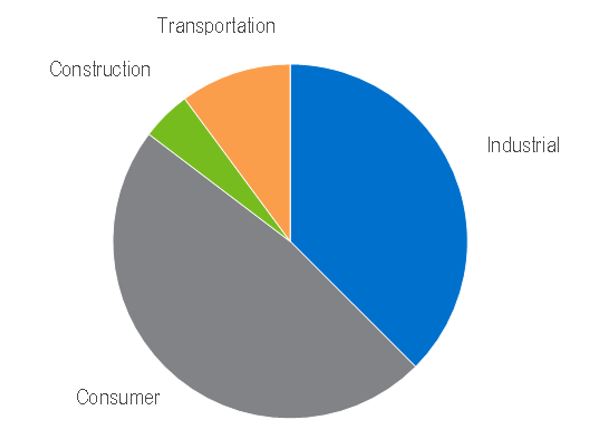Global Thermoplastic Polyurethanes Market Snapshot

Thermoplastic polyurethanes consist of three components: a diisocyanate source, a long-chain polyol, and a chain extender (a short chain diol).
Producers of TPUs have largely standardized on 4,4’-diphenylmethane diisocyanate (MDI) as the isocyanate source. Other specialty isocyanates are utilized, and account for an estimated 15 to 20 percent of isocyanate use. These include aliphatic isocyanates such as hexamethylene diisocyanate (HDI), which are used to provide improved UV resistance.
The primary polyols utilized fall into the broad categories of polyether and polyester polyols. Polyether based TPUs are based on polyoxytetramethylene diol (PTMEG) polyols, which are made from tetrahydrofuran (THF). Polyester polyols are typically the condensation products of adipic acid and one or more simple aliphatic diols in the series of ethylene glycol to 1,6-hexanediol. Other polyols include polycaprolactones, polybutadienes, and polycarbonates, although their production is small compared to polyethers and polyesters.
Chain extenders are used to increase molecular weight. Commonly used materials include 1,4-butanediol and 1,6-hexanediol. Diamines are also sometimes used.
As numerous compounds can be utilized for each of the three components, there is an extremely broad number of possible formulations, and thus a broad range of physical properties and hardnesses. Thermoplastic polyurethanes therefore have attractive properties such as abrasion resistance, durability, toughness, strength, flexibility, shock absorbency, and chemical resistance.
TPU Bridges the Gap between Rubber and Plastics
TPU Bridges the Gap between Rubber and Plastics
TPUs can be processed by injection moulding, extrusion, and even dissolved and used as an adhesive. Due to their versatility, TPUs are found in a wide range of market segments including industrial applications, consumer products, transportation and construction. However, TPUs are relatively expensive, and thus are used only in cases where a less expensive material is unsuitable.
Global TPU demand is estimated to have reached over one million tons in 2023 and is forecast to grow by around five percent annually to 2035, driven by continued demand growth in all major end-markets.
Global TPU Demand by Industry
Global TPU Demand by Industry
The global installed TPU capacity in 2023 is estimated at nearly two million tons per year. China accounts for over 70 percent of all capacity currently and has a large influence on the global markets. Nearly all capacity that has come on-stream over the past five years has been located in China, with near term capacity developments continuing to be concentrated in China.
Find out more…
Market Insights: Thermoplastic Polyurethane (TPU) - 2024
This report provides analysis and forecast to 2035 of supply and demand of the global thermoplastic polyurethane (TPU) market. End-use demand is segmented by industrial, consumer, automotive and construction.
The report includes discussion regarding key market drivers and constraints, as well as supply, demand and trade analysis for nine regions: North America, South America, Western Europe, Central Europe, Eastern Europe, Middle East, Africa, Asia Pacific, and China. Analysis also includes the competitive landscape, capacity listing and cost competitiveness along with a snapshot of latest pricing trends by region.

